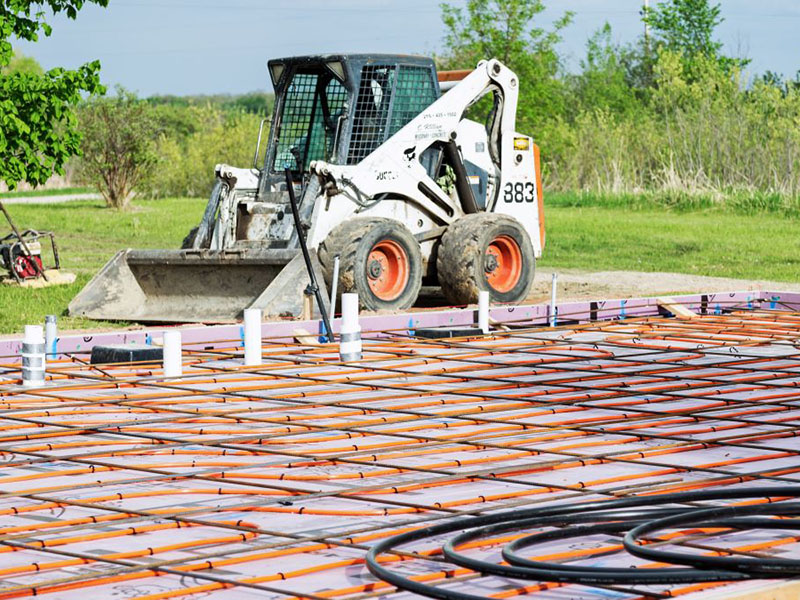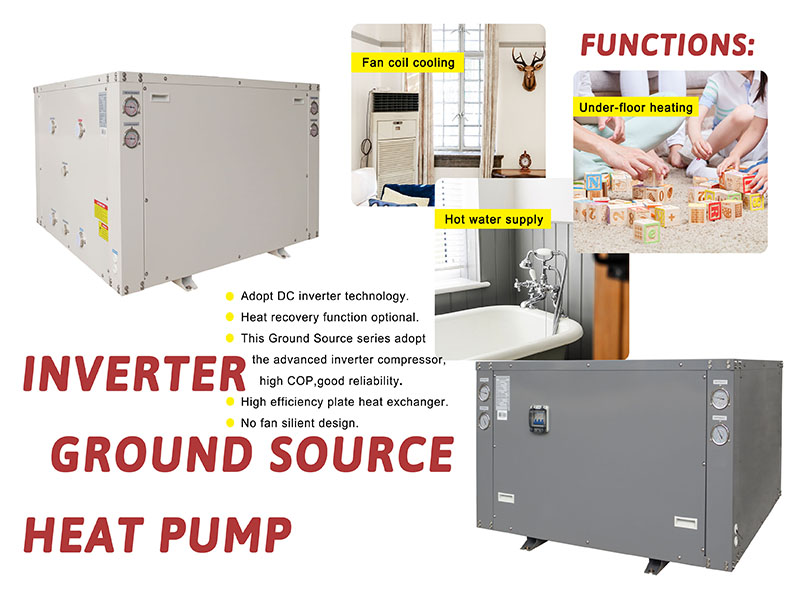Air source heat pumps vs. ground source heat pumps
There are many factors to consider when choosing a heat pump. Not only do you need to weigh up the costs and efficiencies of each system, but also the practicality of the installation, available space in your home, noise and any required planning permissions.
We took a look at the key differences between the two most common types of heat pumps - ground and air source heat pumps - to help you make a better informed investment decision for heating your home efficiently.
According to our consumer research, most people cite energy bills as one of the main reasons why they install energy efficiency upgrades at home. People with cold homes are the most likely group to look into this, as difficulty in heating rooms is the biggest single predictor for householders considering or planning energy saving action.
How they work-ground and air source heat pumps
Heat pumps are an effective and energy efficient way to create hot water to heat your home. They work by absorbing heat from a source and transferring it to a liquid, which is compressed to increase the temperature further. The heat is transferred from the liquid into water which is used to provide heating for a property, either through radiators or underfloor heating.
The main difference between the two types of heat pumps is simply where they get heat from: air source heat pump (ASHP) absorbs heat from the air whereas ground source heat pump(GSHP) absorbs heat from the ground.
Cost of ground and air source heat pumps
While the basis of the two technologies is the same, the cost of having them installed is not. The cost of an air source heat pump is approximately £6,000-£8,000. A ground source heat pump on the other hand can cost between 50-100% more and set you back approximately £10,000-£18,000. Much of the additional cost for the ground source heat pump installation comes from the costs of digging a ground loop into the land outside a property – this is the part of the heat pump which absorbs heat from the ground.
Despite the greater upfront cost of installing a ground source heat pump, this type of pump is more efficient when it comes to heating your home, which results in higher fuel savings and lower energy bills. Renewable Heat Incentive (RHI) payments are also higher for ground source heat pumps compared to payments for air source heat pumps, meaning you will save more in the long term when opting for a ground source heat pump.
Ground source heat pumps are more efficient than air source heat pumps due to the fact that heat is transferred through the ground via the movement of water, and water has a greater capacity to hold heat compared to air.
And when you consider the time of year you would typically rely on your heat pump the most – when temperatures drop during the winter months – it's even easier to understand why the ground source heat pump wins in terms of efficiency. The temperature of the ground is fairly fixed at a constant 10 - 130C all year round, so a ground source heat pump remains consistently efficient throughout the year, unaffected by seasonal changes.
An air source heat pump on the other hand is subject to fluctuating air temperatures and would have to work harder to produce heat when the outside air temperature is lower. This means that in the colder months, when the heat pump is likely relied upon the most, it is least efficient, and will use more units of electricity to produce the same amount of heating as a ground source heat pump would in the same period of time.
Air source heat pumps will continue to operate at temperatures of around -15°C (some can operate at even lower temperatures), but will be most efficient at higher temperatures.

ground and air source heat pumps Energy efficiency
All ground and air source heat pumps work in a similar way, by extracting heat from their surroundings (from the ground, the air, or from water) and converting it into useful energy which can heat your home. They need some electricity to run, but because they are extracting renewable heat from the environment, the energy output is much greater than the electricity input, making them an energy efficiency method of heating your home.
Requirements for installation:
As a general rule, air source heat pumps are generally easier to install than ground source heat pumps as they do not require any land to be dug up for installation. They look similar to air conditioning units and are typically mounted on to an external wall outside a property. The external until is connected to an internal unit containing circulation pumps and hot water, which is usually smaller than the average boiler.
The size of the air source heat pumps will vary depending on your home's heat demand – the bigger the home, the bigger the heat pump unit you'll need. Your installer will let you know what size you need. If there's an existing flue available on your property, your air source heat pump can be up and running in a matter of days.
While they don't take up too much outdoor space, the unit will be visible from the outside of your property, so it's best to check with your local planning authority first, to find out if you need planning permission. As the unit is above ground, it will produce a noise similar to that of an air conditioning unit, which could be bothersome to you or your neighbours.
When thinking about installing a ground source heat pump, one of your first considerations should be if you have enough outdoor space to fit a ground loop. The ground loop can be installed in two ways, vertically and horizontally, but each will take up a certain amount of space in your garden and you'll need to check the ground is suitable for digging.
If you want to put the pipes in vertically, you'll need specialist machinery to drill a borehole, which will increase the cost of installation. Opting to lay the pipework horizontally is a cheaper method of installing a ground source heat pump, but you'll need a lot more space, so it's only suitable if you've got a large garden. You will also need some space indoors to fit the heat pump unit – this is about the size of a fridge and can create a low level humming sound, similar to an extractor fan or air conditioning unit.
As there is a lot of planning and labour required to install a ground source heat pump, the entire process can take a number of weeks. Once installed, however, the pipework for your ground source heat pump will not be visible and will not change the look of your property or functionality of your garden.

Which should you choose?——Ground and air source heat pumps
Despite the similarities in the way that they work, these two types of heat pump have very different setups and requirements. There is no clear winner here and both offer energy saving benefits that will help you cut energy costs and heat your home efficiently and effectively.
Whether it's due to budget or space restrictions, the answer for some will be simple, but others will need to take more time to carefully consider the needs of their household. The good news - either way, you'll be doing your bit for the environment, and thanks to the Renewable Heat Incentive, you should make your money back from the installation in the long term.
For non-DC inverter heat pump, we recommend DC inverter heat pump. They are more energy efficient and save electricity. And OSB DC inverter heat pump will be your best choice. If you have enough land to use, we suggest that you choose OSB DC inverter ground source heat pump.More detail about it, you can refer to the below picture:

Remark:
Some of the articles are taken from the Internet. If there is any infringement, please contact OSB to delete it. If you're interesting in heat pump products,please feel free to contact OSB heat pump. We are your best choice.
Comments
Post a Comment